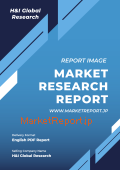| 【英語タイトル】Probiotic Drinks Market - Growth, Trends, Covid-19 Impact, and Forecasts (2023 - 2028)
|
 | ・商品コード:MOR23AP127
・発行会社(調査会社):Mordor Intelligence
・発行日:2023年1月23日
・ページ数:125
・レポート言語:英語
・レポート形式:PDF
・納品方法:Eメール(受注後2-3営業日)
・調査対象地域:アメリカ、カナダ、メキシコ、イギリス、フランス、ドイツ、イタリア、スペイン、ロシア、中国、日本、オーストラリア、インド、ブラジル、アルゼンチン、南アフリカ、UAE
・産業分野:食品
|
◆販売価格オプション
(消費税別)
※販売価格オプションの説明
※お支払金額:換算金額(日本円)+消費税
※納期:即日〜2営業日(3日以上かかる場合は別途表記又はご連絡)
※お支払方法:納品日+5日以内に請求書を発行・送付(請求書発行日より2ヶ月以内に銀行振込、振込先:三菱UFJ銀行/H&Iグローバルリサーチ株式会社、支払期限と方法は調整可能)
|
❖ レポートの概要 ❖
Mordor Intelligence社は、世界のプロバイオティクス飲料市場規模が予測期間中(2023年-2028年)に年平均8.5%成長すると予想しています。本調査資料では、プロバイオティクス飲料の世界市場を広く調査・分析し、イントロダクション、調査手法、エグゼクティブサマリー、市場動向、製品種類別(植物性プロバイオティクス飲料、乳性プロバイオティクス飲料)分析、流通チャネル別(スーパーマーケット/大型スーパーマーケット、コンビニエンスストア、薬局・健康食品店、オンライン小売店、その他)分析、地域別(アメリカ、カナダ、メキシコ、イギリス、フランス、ドイツ、イタリア、スペイン、ロシア、中国、日本、オーストラリア、インド、ブラジル、アルゼンチン、南アフリカ、UAE)分析、競争状況、市場機会・将来動向、新型コロナウイルス感染症の影響などの項目を記載しています。なお、こちらの資料には、GCMMF (Amul)、Bio-K Plus International、Fonterra Co-op Group Ltd、Groupe Danone SA、Grupo Lala、Harmless Harvest、Lifeway、PepsiCo Inc. ( Kevita Inc.)、Yakultなどの企業情報が含まれています。
・イントロダクション
・調査手法
・エグゼクティブサマリー
・市場動向
・世界のプロバイオティクス飲料市場規模:製品種類別
- 植物性プロバイオティクス飲料の市場規模
- 乳性プロバイオティクス飲料の市場規模
・世界のプロバイオティクス飲料市場規模:流通チャネル別
- スーパーマーケット/大型スーパーマーケットチャネルの市場規模
- コンビニエンスストアチャネルの市場規模
- 薬局・健康食品店チャネルの市場規模
- オンライン小売店チャネルの市場規模
- その他チャネルの市場規模
・世界のプロバイオティクス飲料市場規模:地域別
- 北米のプロバイオティクス飲料市場規模
アメリカのプロバイオティクス飲料市場規模
カナダのプロバイオティクス飲料市場規模
メキシコのプロバイオティクス飲料市場規模
…
- ヨーロッパのプロバイオティクス飲料市場規模
イギリスのプロバイオティクス飲料市場規模
フランスのプロバイオティクス飲料市場規模
ドイツのプロバイオティクス飲料市場規模
…
- アジア太平洋のプロバイオティクス飲料市場規模
中国のプロバイオティクス飲料市場規模
日本のプロバイオティクス飲料市場規模
インドのプロバイオティクス飲料市場規模
…
- 南米/中東のプロバイオティクス飲料市場規模
ブラジルのプロバイオティクス飲料市場規模
アルゼンチンのプロバイオティクス飲料市場規模
南アフリカのプロバイオティクス飲料市場規模
…
・競争状況
・市場機会・将来動向
・新型コロナウイルス感染症の影響 |
The probiotic drinks market is projected to record a CAGR of 8.5% during the forecast period (2023 – 2028).
During the COVID-19 pandemic, the health benefits of probiotic drinks have been instrumental in driving the market’s growth. The probiotic drinks market is driven by a paradigm shift toward preventive health management practices amid rising healthcare costs and the increasing burden of diseases, such as COVID-19. Probiotic drinks are a part of the functional beverages, which can help improve gut health conditions by maintaining the balance of the intestine and thereby increasing immunity. For instance, in April 2020, Meluka Australia, the ASX-listed Eve Investment subsidiary, launched a new product, Meluka honey and probiotic tonic, to be the first of its kind in the market, as per the company claim.
There is an increasing demand for pure and natural ingredients in probiotic drinks, which has led the key players in the market to expand their product offerings with an extensive range of authentic fruit-based probiotic drinks.
The millennials, being technologically advanced, update themselves with the facts related to health, thereby amending their food habits accordingly. Moreover, the dairy-based probiotic drinks segment is the leading segment in the probiotic market, followed by the fruit-based probiotic drinks segment.
Probiotic Drinks Market Trends
Growing Demand for Functional Food and Beverages
Consumers are looking for beverages that give an additional benefit other than quenching their thirst. The increasing amount of health-conscious population is the major factor boosting the growth of the functional food and beverage market. Functional food and beverages have additional nutritional benefits that may help maintain the body’s balance, especially the gut. Many fruits and beverage companies are extending their product line by adding functional beverages to their portfolio, which includes probiotic drinks. Furthermore, with the increasing demand for clean-label products and plant-based ingredients, manufacturers operating in the dairy space are investing heavily in product innovation to cater to the ever-increasing consumer demand. For instance, in 2020, the Indian-inspired brand DAH! launched oat+almond+coconut (OAC) yogurt cups in the United States that are vegan, Non-GMO, and Kosher. These yogurt cups have been fortified with 8 grams of almond protein, contain 280 calories, are naturally sweetened, and are available in six differentiated flavors to suit the consumers’ preferences for flavors and nutrition.
Asia-Pacific Remains the Fastest-growing Market
China, Japan, and India are the key markets in the region. According to the International Probiotics Association (IPA), China is one of the most important markets for probiotics in the world. Producers and suppliers have been witnessing a significant increase in sales in the nation. The majority of probiotics are consumed in the form of yogurts and fermented products (from soy to vegetables and even eggs). Probiotic drinks, such as drinking yogurt, have been experiencing increasing demand from the region. Further, kombucha is increasingly penetrating the market. For Instance, in 2021, PERKii launched a non-fermented Sparkling Probiotic Drink into 700 Coles Supermarkets to compete with kombucha. Australian probiotic technology brand PERKii launched its new 100% plant-based, non-fermented Sparkling Probiotic Drinks into over 700 Coles Supermarkets nationally.
Probiotic Drinks Market Competitor Analysis
Some of the major players in the region are GCMMF (Amul), Fonterra Co-op Group Ltd, Groupe Danone SA, and Yakult, among others. Small and regional players are also increasing their popularity and product qualities to remain in the competition. Companies are making themselves competitive by bringing new differentiation with flavors, healthy ingredients, and innovative packaging. Further, Major players have their presence in all the major countries of the world and are expanding to the regions where they are not present.
Additional Benefits:
- The market estimate (ME) sheet in Excel format
- 3 months of analyst support
1 INTRODUCTION
1.1 Study Assumptions and Study Deliverables
1.2 Scope of the Study
2 RESEARCH METHODOLOGY
3 EXECUTIVE SUMMARY
4 MARKET DYNAMICS
4.1 Market Drivers
4.2 Market Restraints
4.3 Industry Attractiveness – Porter’s Five Forces Analysis
4.3.1 Bargaining Power of Suppliers
4.3.2 Bargaining Power of Consumers
4.3.3 Threat of New Entrants
4.3.4 Threat of Substitute Products
4.3.5 Degree of Competition
5 MARKET SEGMENTATION
5.1 By Product Type
5.1.1 Plant-based Probiotic Drinks
5.1.2 Dairy -based Probiotic Drinks
5.2 By Distribution Channel
5.2.1 Supermarkets/Hypermarkets
5.2.2 Convenience Stores
5.2.3 Pharmacies/Health Stores
5.2.4 Online Retail Store
5.2.5 Other Distribution Channels
5.3 Geography
5.3.1 North America
5.3.1.1 United States
5.3.1.2 Canada
5.3.1.3 Mexico
5.3.1.4 Rest of North America
5.3.2 Europe
5.3.2.1 United Kingdom
5.3.2.2 France
5.3.2.3 Germany
5.3.2.4 Italy
5.3.2.5 Spain
5.3.2.6 Russia
5.3.2.7 Rest of Europe
5.3.3 Asia-Pacific
5.3.3.1 China
5.3.3.2 Japan
5.3.3.3 Australia
5.3.3.4 India
5.3.3.5 Rest of Asia-Pacific
5.3.4 South America
5.3.4.1 Brazil
5.3.4.2 Argentina
5.3.4.3 Rest of South America
5.3.5 Middle-East
5.3.5.1 South Africa
5.3.5.2 United Arab Emirates
5.3.5.3 Rest of Middle-East
6 COMPETITIVE LANDSCAPE
6.1 Strategies Adopted by Key Players
6.2 Most Active Companies
6.3 Market Share Analysis
6.4 Company Profiles
6.4.1 GCMMF (Amul)
6.4.2 Bio-K Plus International
6.4.3 Fonterra Co-op Group Ltd
6.4.4 Groupe Danone SA
6.4.5 Grupo Lala
6.4.6 Harmless Harvest
6.4.7 Lifeway
6.4.8 PepsiCo Inc. ( Kevita Inc.)
6.4.9 Yakult
7 MARKET OPPORTUNITIES AND FUTURE TRENDS
8 IMPACT OF COVID-19 ON THE MARKET











